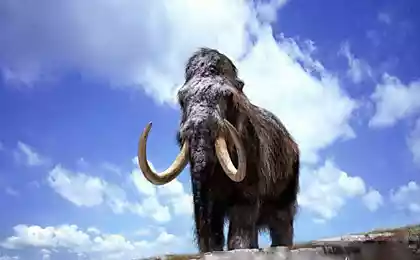816
Ancient people of the Ice Age had lived for some time with an arrow in his back

Contrary to the theory of natural Ötzi not bled out immediately from his wounds, according to the article Journal of the Royal Society Interface, published by the British Academy of Sciences. Scientists led by Albert Zinck of Ludwig Maximilian University in Munich, used a special nano-techniques to explore the oldest blood known to modern science, it has been stored for thousands of years among alpine cold.
Using the so-called power of the atomic force microscope, which is able to distinguish the image of only a few nanometers (billionths of a meter), they identified with the classical form of microparticles donut - healthy red blood cells.
"To be absolutely sure that we were not dealing with pollen, bacteria or even a negative particles of the body, but really with actual blood cells, we used a second analytical method," says Zink.
They used spectroscopy, Raman, where the refracted light from a laser beam gives a clue to the chemical sample. This method showed the presence of hemoglobin and fibrin, which are key components in blood coagulation in the wound of the arrow on the back of Ötzi.
"Because fibrin is present in the new wounds and then disappears, the theory that Ötziumer right after he was wounded by an arrow, as previously thought, and not a few days after this, can no longer be maintained," says Zink.
Ötzibyli Remains found two German travelers in September 1991 in the Alps in the vicinity of South Tyrol, northern Italy, at an altitude of 3210 meters (10 500 feet) above sea level.
The scientists used the diagnosis remains based on high technology and genomic sequencing to penetrate his mysterious past. These efforts have led to the conclusion that Ötzi died at the age of 45 years, its growth was about 1.60 meters (five feet, three inches) and weighed 50 kilograms (110 pounds). According to DNA analysis presented in February, Ötzi had brown eyes and dark hair, and also was allergic to dairy products.
The latest information supports the theory that despite the increasing spread of agriculture and dairy production at the time, lactose intolerance was still common.
Ötziperenes violent death by the sword, cut the main blood vessel between the rib cage and the left scapula.
According to the theory proposed in 2010 by the Italian archaeologist, based on seasonal pollen found in the stomach of the mummy and burial place, Ötzi died in the same place where he was found. Instead, he was ceremonially interred - perhaps buried by relatives.
The genetic oddity among the inhabitants of the Solomon Islands: Blond hair
Skin and bone cover early tetrapods mechanism for reducing carbon dioxide served























